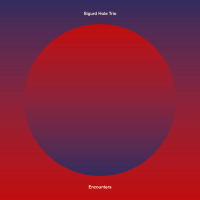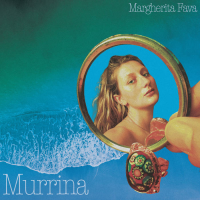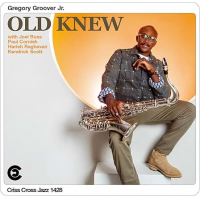Home » Jazz Articles » Album Review » Sonny Rollins: Go West! The Contemporary Records Albums
Sonny Rollins: Go West! The Contemporary Records Albums
Rollins' nickname is "Newk," because of his resemblance to Don Newcombe, a storied big-league pitcher whose prime coincided with the original recordings, and who last pitched in 1960. So, for anyone not from Brooklyn or Los Angeles, where Newcombe pitched, a degree of ignorance is understandable. For younger people, Way Out West may be better known for its William Claxton cover photo, with Rollins looking slightly awkward as a sax-cowboy (the cowboy was a common childhood hero for Baby Boomers), than for its contents. One of the tracks, "You," from the recording Sonny Rollins and the Contemporary Leaders, even served as the theme for the Art Linkletter Show (televised from California, 1952-1969). By ordinary standards, that was long ago and far away, in Southern California's Golden Age.
The rebirth of vinyl recordings in audiophile editions from Craft Recordings, for a top-end market, is the occasion for the reappearance of many classic recordings from that era. Rollins was in his mid-20s when he first went west, to Contemporary Records, to do the originals. California was then still exotic, the land of promise. Disneyland had just opened in Anaheim, in 1956, the year before Rollins recorded Way Out West. The theory was that California was a more open, more innovative, less hidebound environment, and that one could tell the difference between East and West Coast jazz on hearing. Whether or not this was mostly myth (be-bop got off to a rough start in California; and the idea that race relations were better than back East is laughable), Rollins' career was on the upswing. His trip to Los Angeles, if only to record for a hot new label and its owner, Lester Koenig, made sense. Already emerging as the Saxophone Colossus (Prestige, 1957), Rollins was primed for iconic status. Recall that John Coltrane recorded "Like Sonny" on Coltrane Jazz (Atlantic, 1961) in late 1959. If Rollins ever recorded "Like John," that would be news.
What of the music and the other materials included in the Craft production? It includes much more than Way Out West and Contemporary Leaders. Again, some will approach Rollins' earlier work from the problematic standpoint of his later, mature development as a musician, which incorporates Rollins' periodic retreats for study and practice, including the mammoth open-air sessions on the Williamsburg Bridge in New York City from 1959 to 1961. Way Out West, which Rollins himself characterized as a "high concept" recording, does have its devotees, particularly with Ray Brown and Shelly Manne aboard. It is a recording which epitomized a lot of what was characteristic Rollins. Driving, hard-edged, angular in places, but with an occasional sense of tentativeness. Rollins seemingly plays a figure, considers it, repeats it, or explores its harmonic implications, and then moves on. Sometimes he proceeds at a breakneck pace, but less so otherwise. The rudiments for his later exploration of long-form solos are all there as well. The choice of materials, as in "I'm An Old Cowhand," may seem odd, but there are also standards such as Duke Ellington's "Solitude" and Isham Jones "There is No Greater Love." In both recordings—simple teleology may be at work—there is a sense of searching and not always finding, as if Rollins' playing the tenor is an exercise in self-discovery. Reviewers at the time, while unstinting in their praise of Rollins, and throwing stars all over the place in magazines, did occasionally question if Rollins (and Brown) were not entirely sure where to go. That was a fair criticism, although with hindsight, perhaps just another aspect of Rollins' constant dissatisfaction with his own playing. In other words, the questions are sometimes heard in the choruses too.
Much the same occurs with different personnel in a quintet in Contemporary Leaders. A really striking moment comes in an unscheduled and apparently nearly accidental recording of "How High The Moon," that involved Barney Kessel and Rollins: some combination of killing time, fooling around, and trying out new ideas. For that reason, then, this recording seems less coherent than Way Out West, and the appearance of Victor Feldman as a guest on vibes sounds slightly askew. Rollins never mentions him in an accompanying interview done with Ashley Kahn either. Probably just a coincidence. Yet anyone intent on hearing as much of Sonny Rollins as possible will most likely not notice.
A third recording of alternative takes, first released in 1986, is simply a bonus. Listeners can hear what the musicians thought did and did not work. Listeners will have their own opinions as to which take is best remembered.
Ashley Kahn once more does yeoman work in a splendidly illustrated booklet. It contains his own liner notes, plus an original interview with Rollins in 2021. Some will be hard pressed as whether to look or listen first. Undoubtedly, some will try doing both, which is a real treat. The interview is vintage Rollins. He compares looking back on his long life to watching a movie. "I've really been blessedly able to have done it in this incarnation." That must be the mother of all understatements. Go West! may or may not represent the first exposure to Sonny Rollins and company for another generation, but it would be difficult to find a more intriguing or inviting introduction. The whole package is handsomely produced too.
Track Listing
I'm An Old Cowhand; Solitude; Come, Gone; Wagon Wheels; There is No Greater Love; Way Out West; I've Told Ev'ry Little Star; Rock-A-Bye Your Baby With a Dixie Melody; How High the Moon; You; I've Found A New Baby; Along Together; In the Chapel in the Moonlight; The Song is You; I'm An Old Cowhand (alternate); Come, Gone (alternate); Way Out West (alternate); The Song is You; You (alternate); I've Found a New Baby (alternate).
Personnel
Sonny Rollins
saxophoneRay Brown
bass, acousticVictor Feldman
multi-instrumentalistHampton Hawes
pianoBarney Kessel
guitar, electricShelly Manne
drumsLeroy Vinnegar
bass, acousticAlbum information
Title: Go West! The Contemporary Records Albums | Year Released: 2023 | Record Label: Craft Recordings
Tags
PREVIOUS / NEXT
Support All About Jazz
 All About Jazz has been a pillar of jazz since 1995, championing it as an art form and, more importantly, supporting the musicians who make it. Our enduring commitment has made "AAJ" one of the most culturally important websites of its kind, read by hundreds of thousands of fans, musicians and industry figures every month.
All About Jazz has been a pillar of jazz since 1995, championing it as an art form and, more importantly, supporting the musicians who make it. Our enduring commitment has made "AAJ" one of the most culturally important websites of its kind, read by hundreds of thousands of fans, musicians and industry figures every month.




























